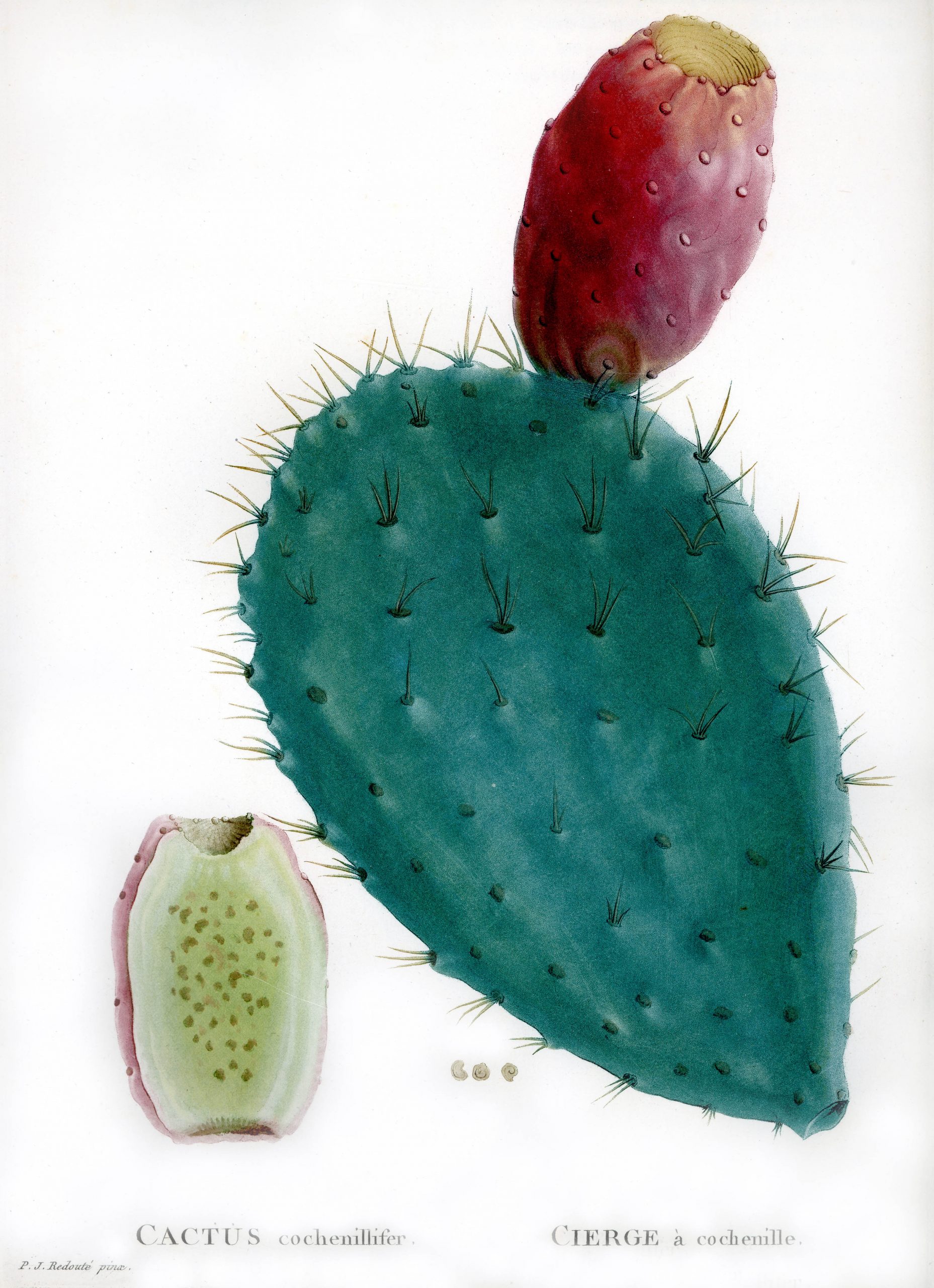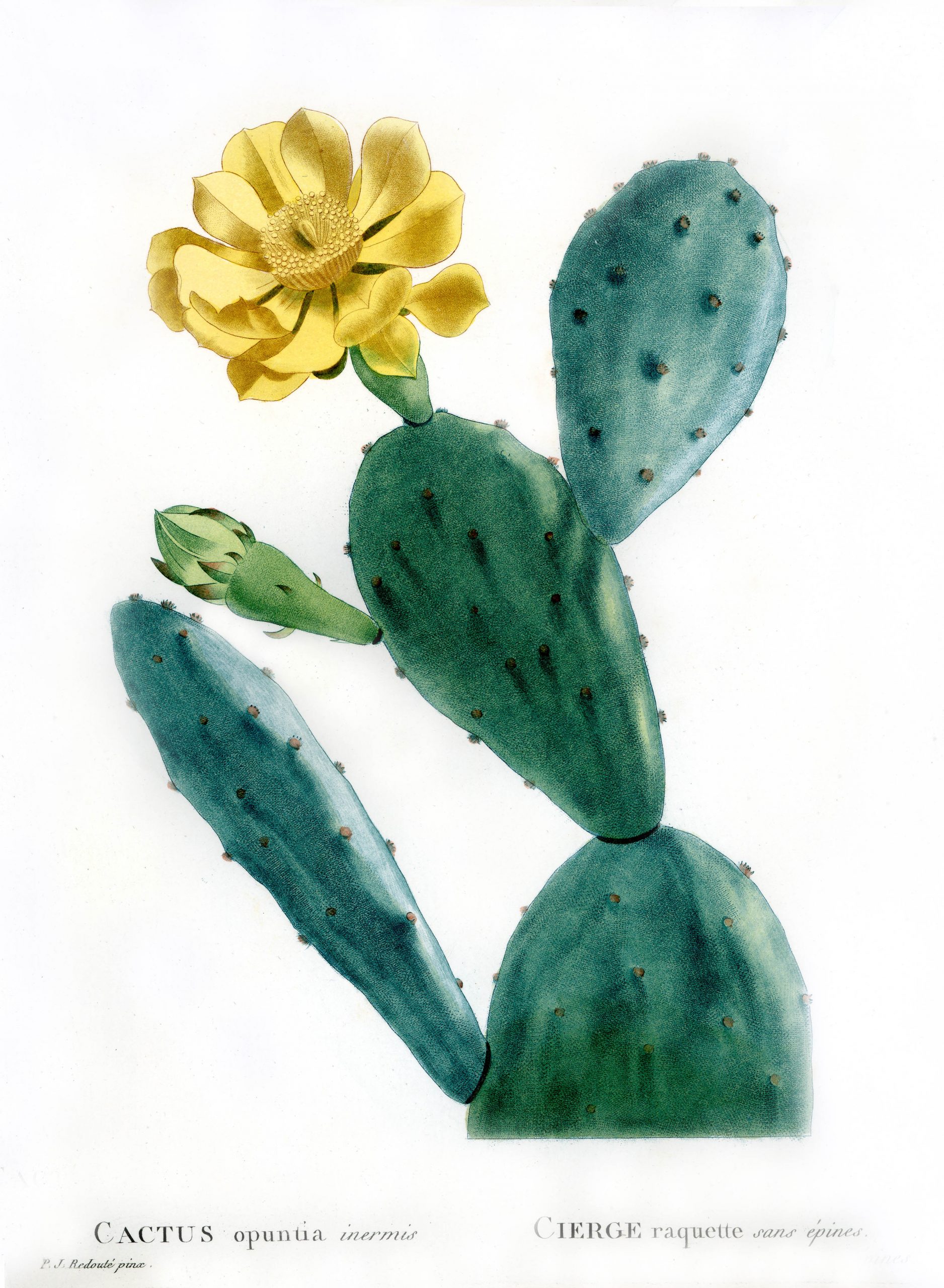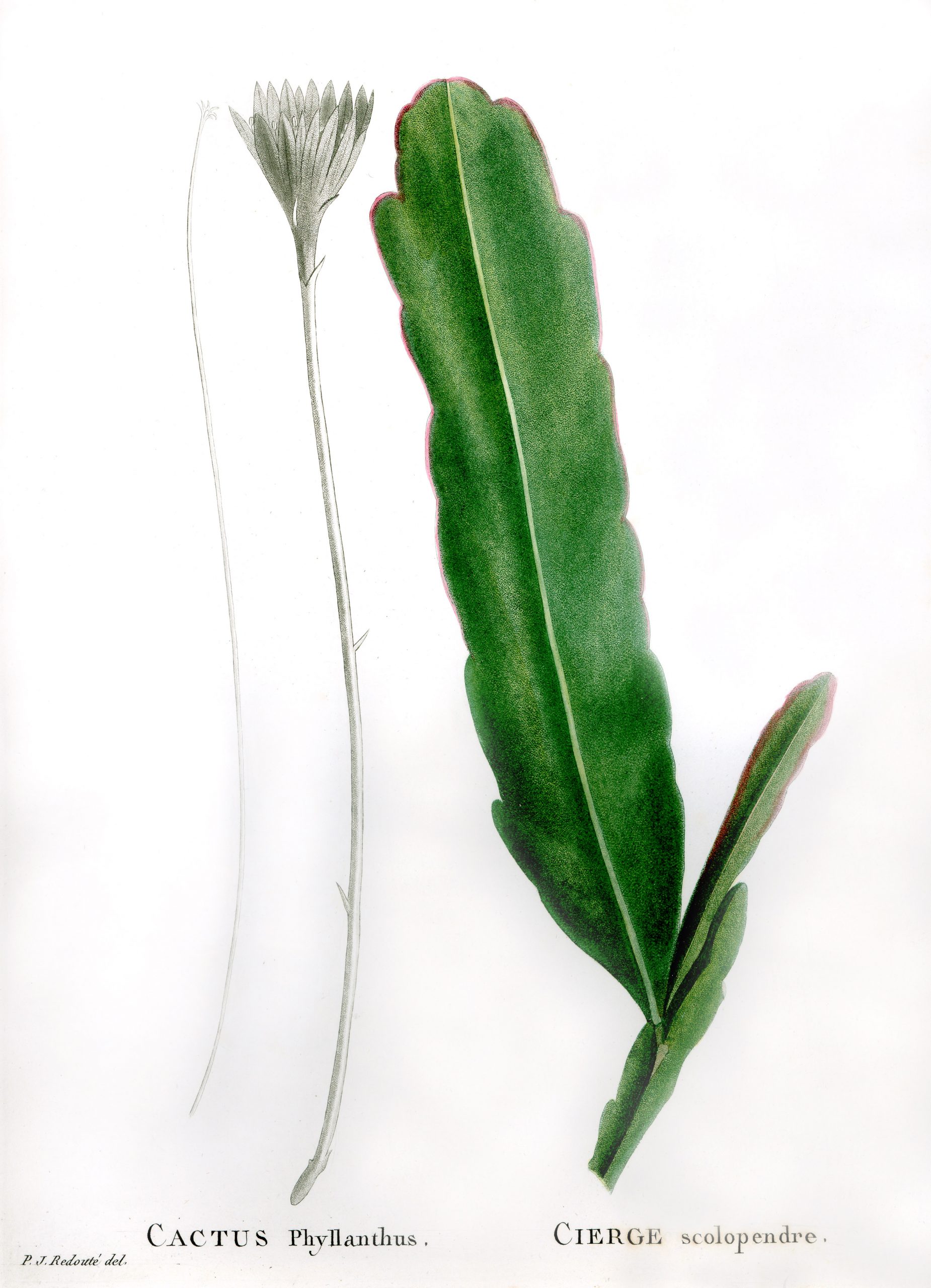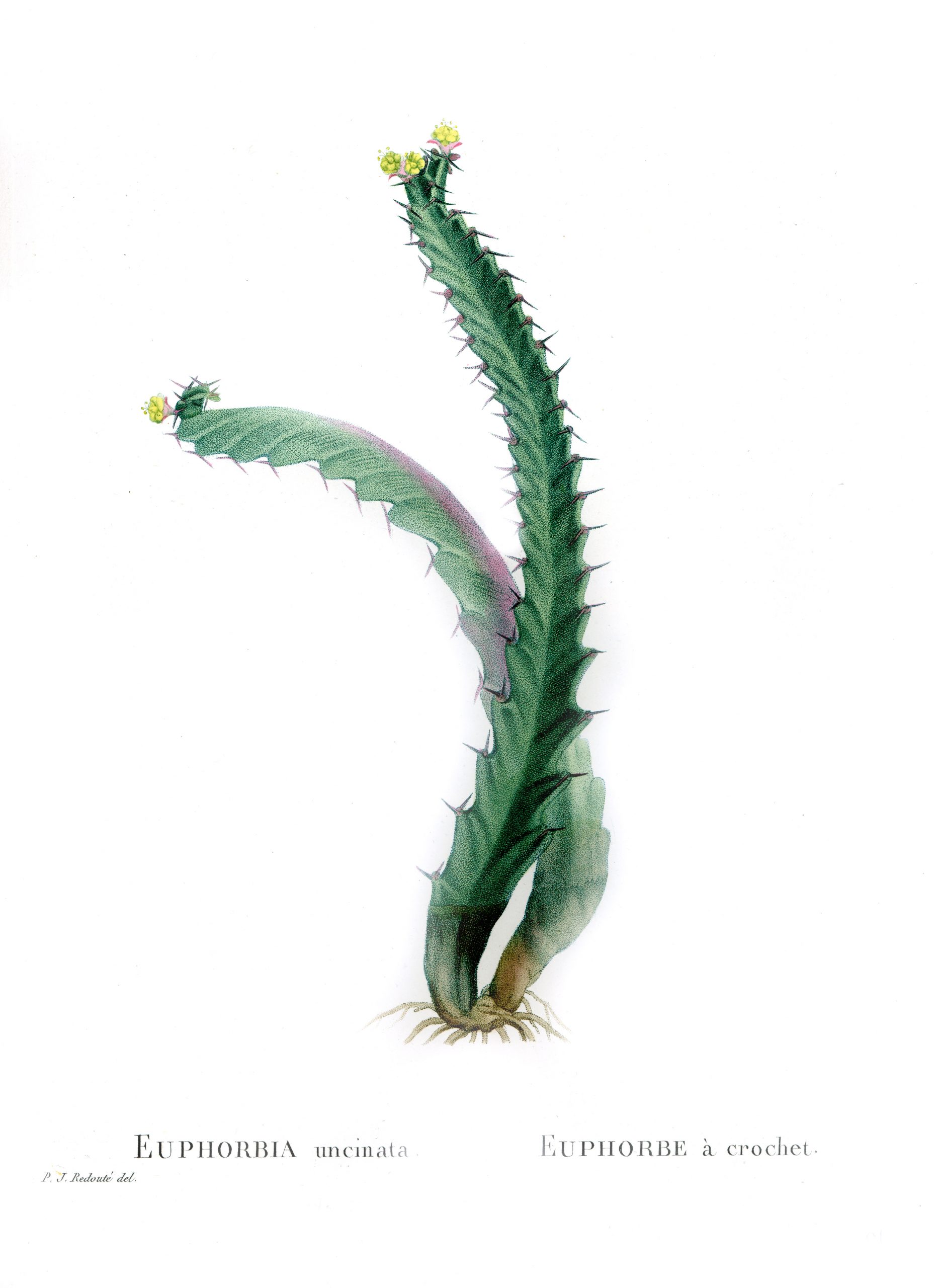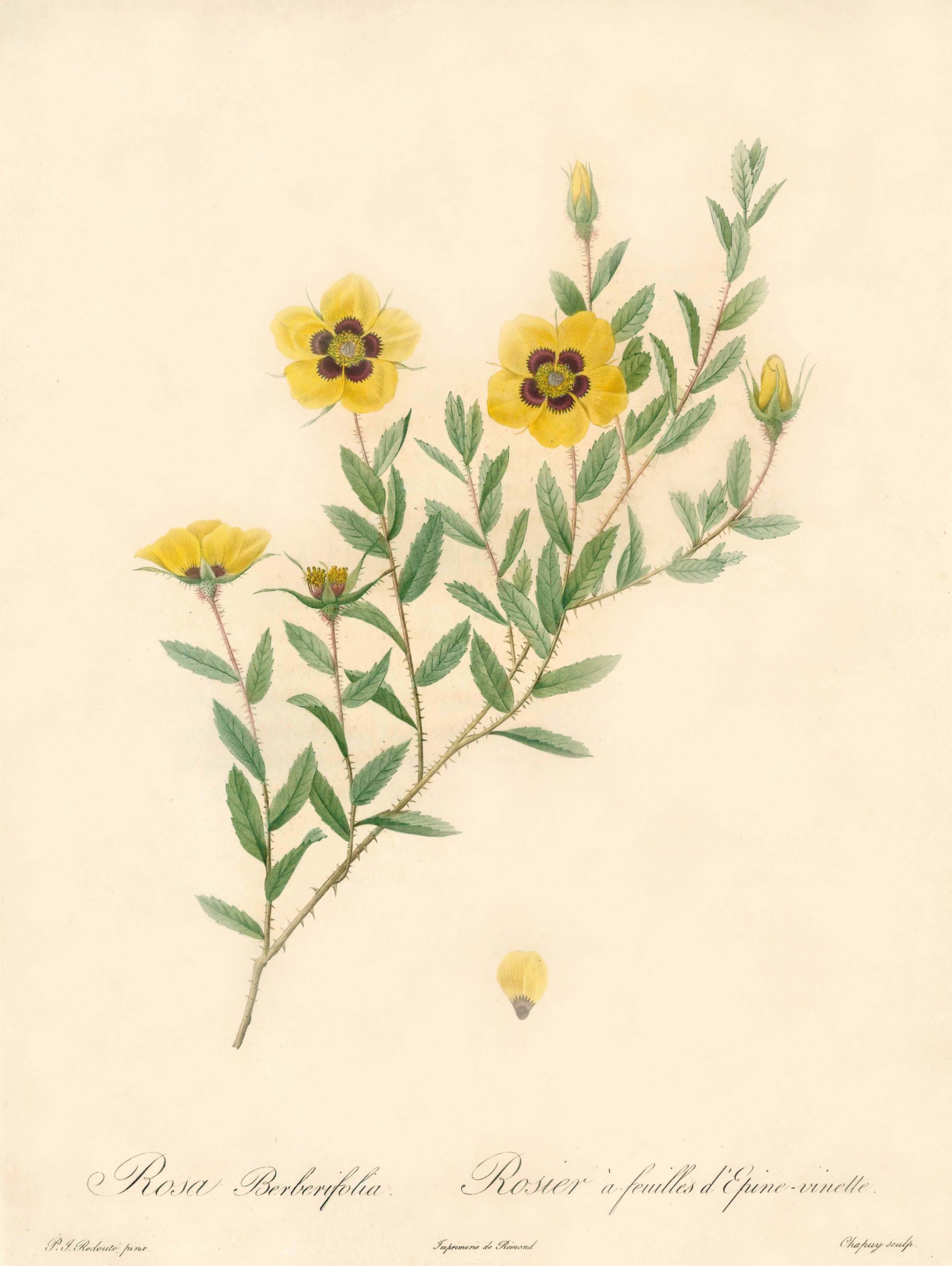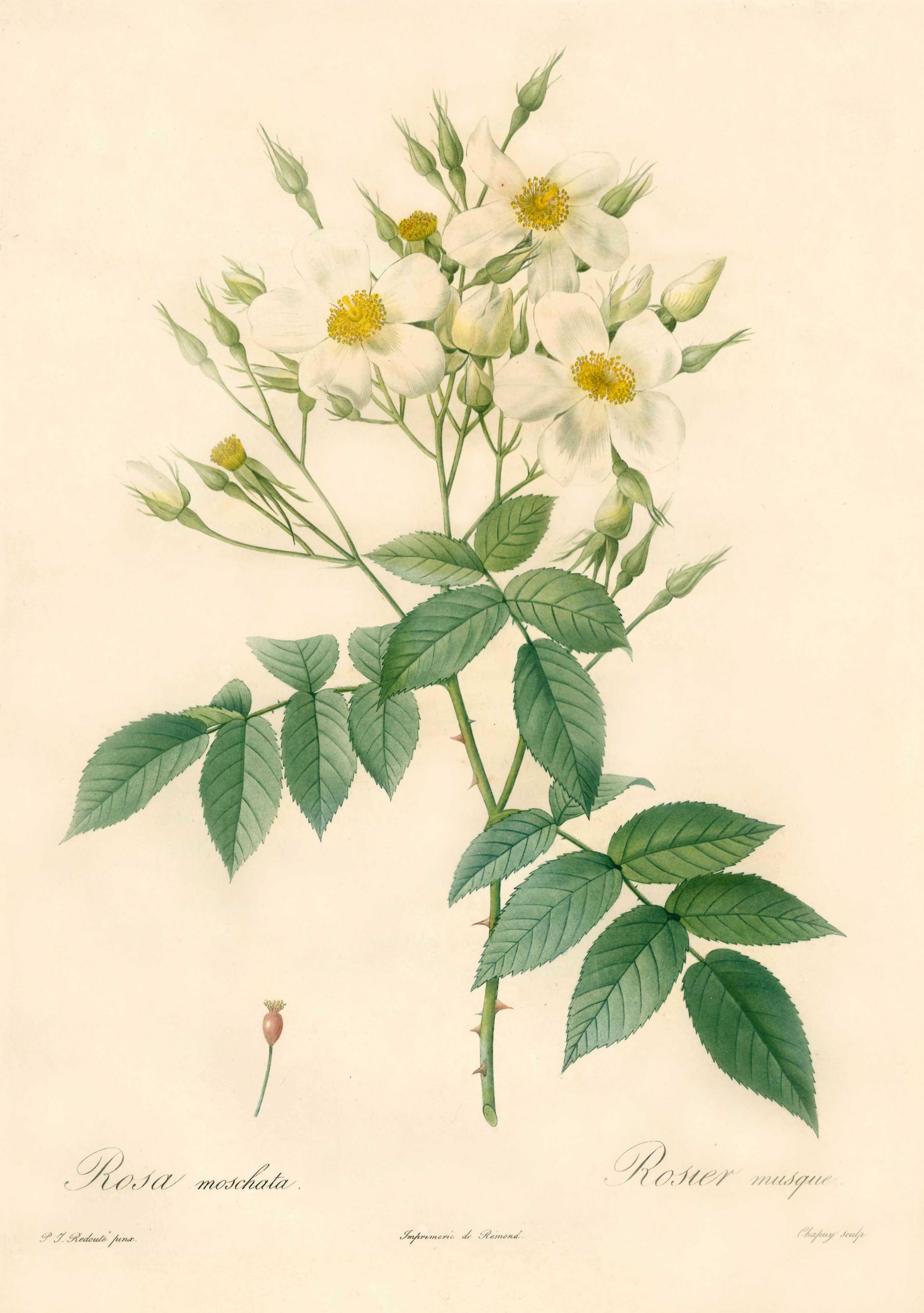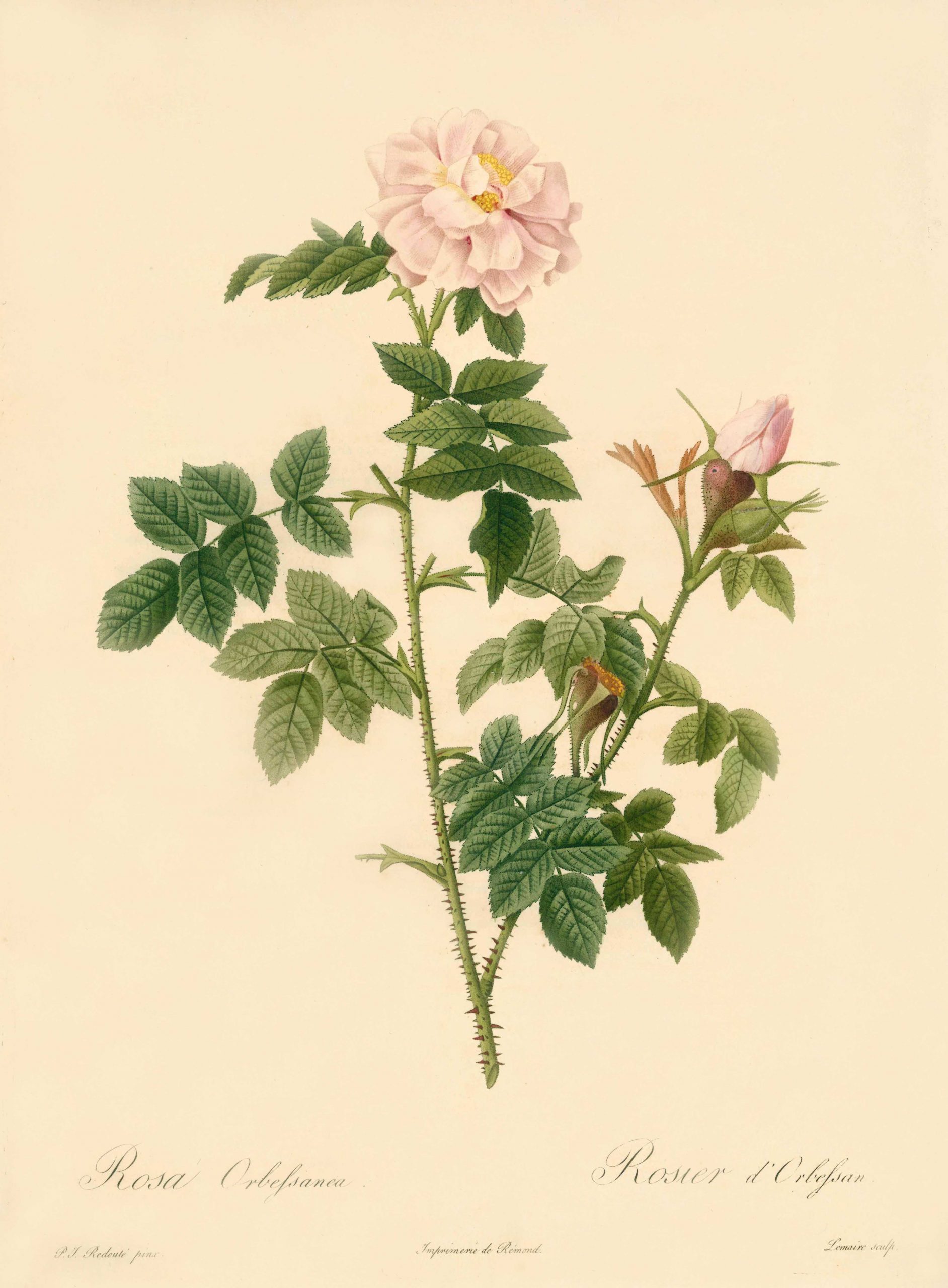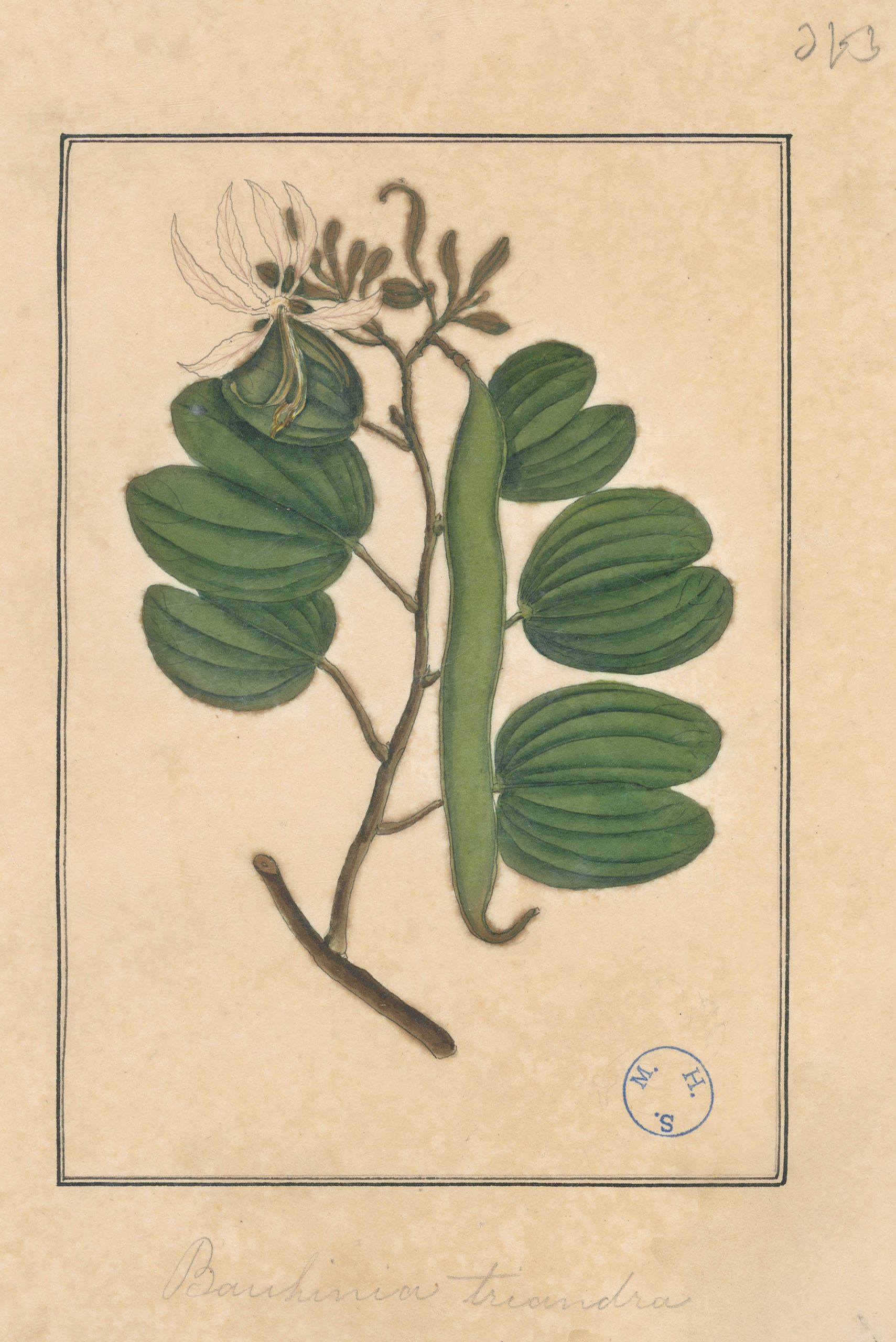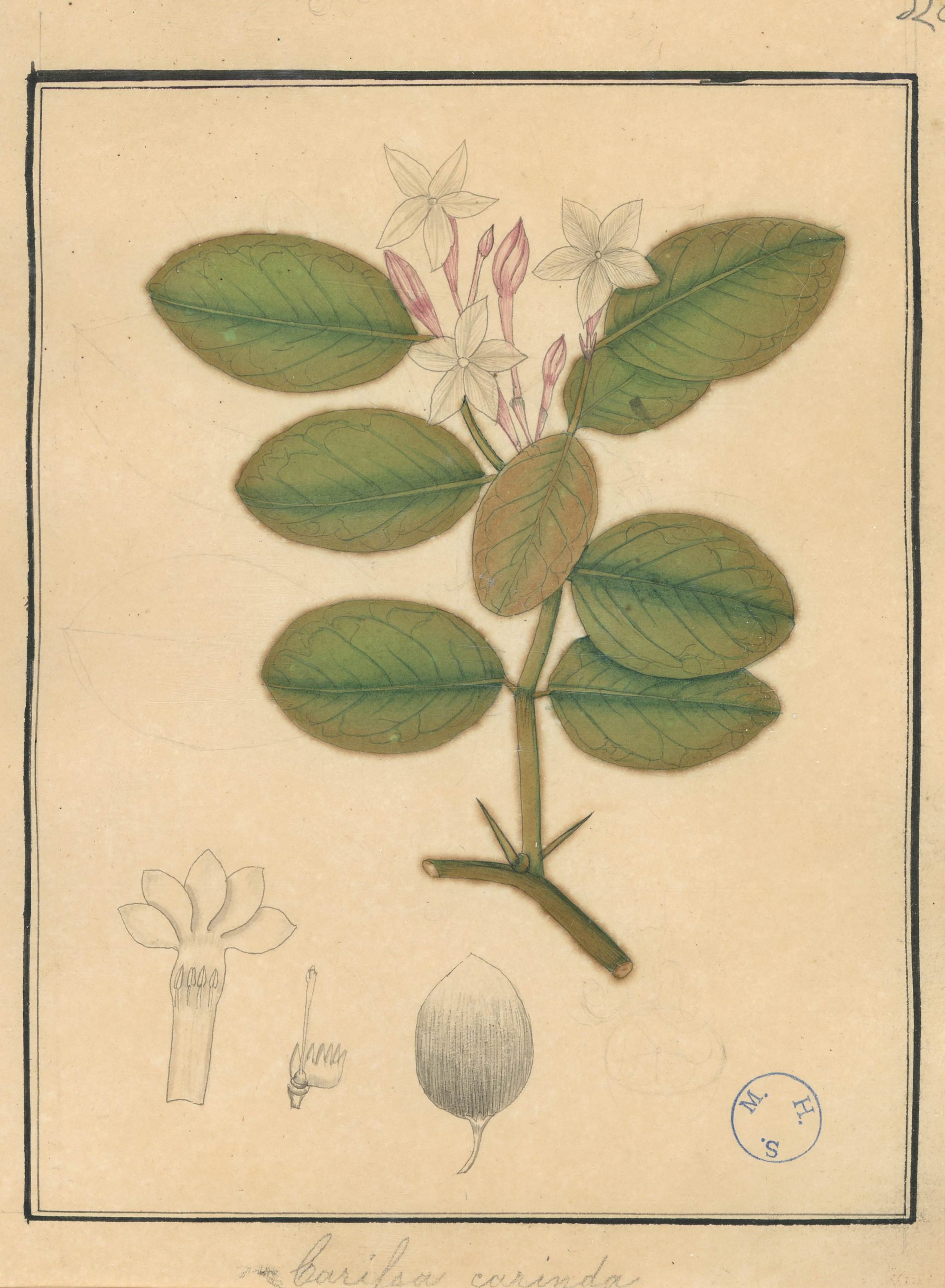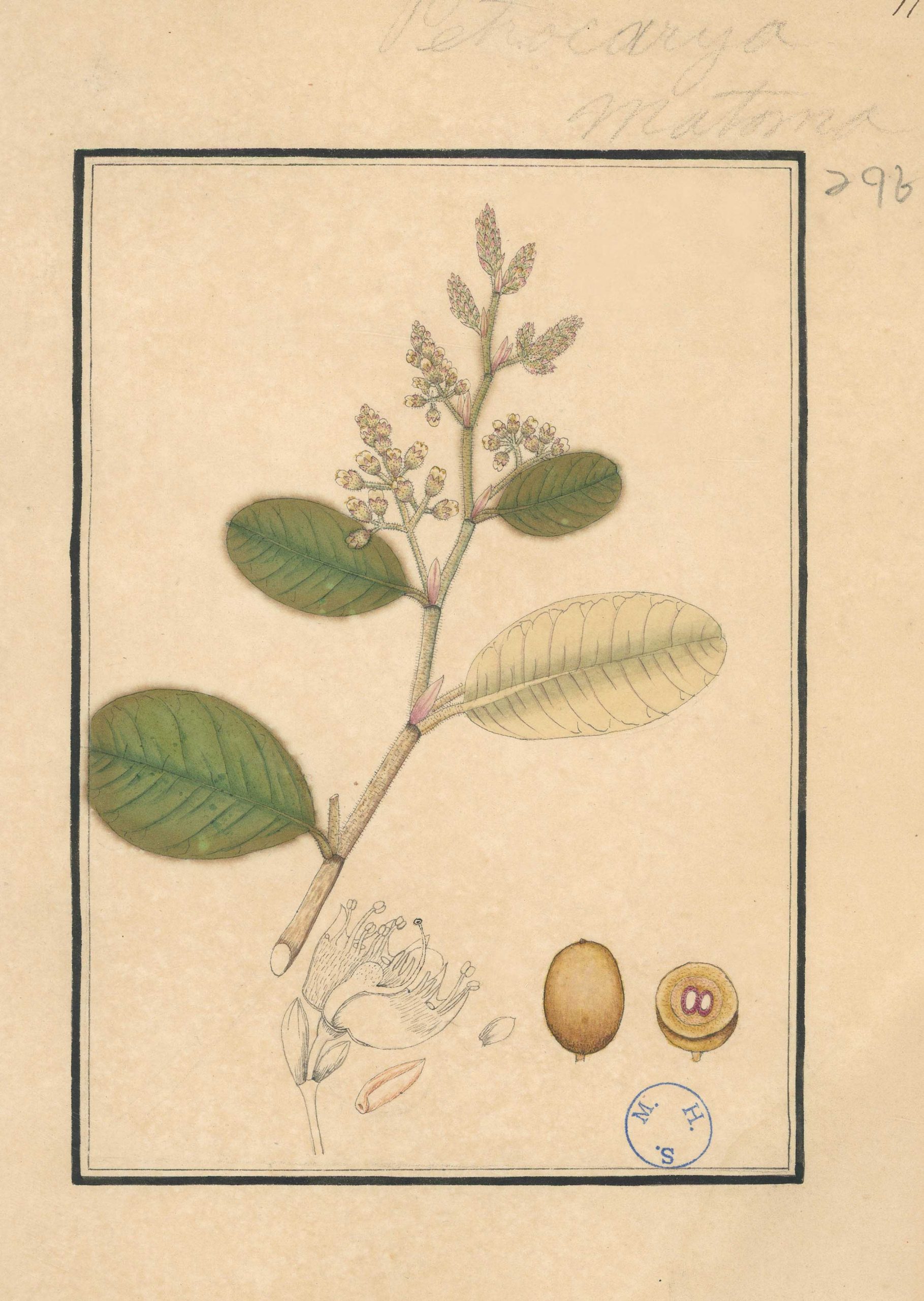The Arader Natural History Collection of Art
As one of the newer additions to the Library, the Arader Natural History Collection of Art celebrates art, science, and the beauty of plants and nature. The Arader Collection contains over 2,000 artworks, including fine original hand-colored stipple engravings along with lithographs, and chromolithographs (1737–1890) of flora and fauna by artists such as Mark Catesby, P.J. Redouté, John Gould, Joseph Carson, and Johnann Wilhelm Weinmann, as well as original watercolor drawings commissioned by William Roxburgh, a Scottish botanist and founding father of Indian botany.
Botany is a profoundly visual discipline, dependent on observation to identify and classify specimens. These works of art, most of which are from the Age of Exploration and Discovery (18th and early 19th centuries), help to bring this field of science in focus and alive. They tell the story of the plants and animals they depict and transmit important information about the natural world in which we live.
A selection of pieces from the Arader Natural History Collection are on view in the Upper Atrium Collections Gallery at BRIT as well as below.
The Arader Natural History Collection of Art is overseen by BRIT Librarian, Ana Niño.
Pierre Joseph Redoute
Pierre-Joseph Redoute (1759 – 1840) was a botanist as well as a painter. Having originated from Belgium, he was the official court painter at Versailles for Marie Antoinette as well as Empress Josephine at Malmaison and was widely known as an exceptional and unmatched botanical illustrator. He is best known for his stipple engravings with original hand color in Les Roses, Les Liliacees, as well as Plantarum Succulentarum Historia, also titled Histoire des Plantes Grasses.
Plantarum Succulentarum Historia
Lightbox
Les Roses
France, 1817-1824. Les Roses were painted at Chateau de Malmaison where they were commissioned by Empress Josephine, wife of Napoleon. Les Roses includes some of Redoute’s most widely known and loved paintings.
Lightbox
William Roxburgh
William Roxburgh (1751–1815), “The Founding Father of Indian Botany,” who spent more than thirty years of his life in India, was an eminent Scottish botanist. He drew Indian plants for the East India Company using a team of artists working for him in Calcutta. The East India Company was founded in 1600 by Queen Elizabeth I for the purposes of trade with East and Southeast Asia and India.
In 1778, the company set up a post called “Naturalist and Botanist”, or “Naturalist to the Madras Government,” whose job it was to investigate and test plants that might be adapted for medicine or trade. Roxburgh took up the Madras post in 1776. In 1793, he went to Calcutta to be the first Superintendent of the Honourable Company’s Botanic Garden (founded in 1786). While in Calcutta, Roxburgh continued the custom that he had started in Madras of training and employing Indian artists to record plants grown in the garden and other species of interest.
Lightbox
Carousel items
-
Collections Insights
Collections Insights brings together three distinct perspectives that reflect the depth and richness of botanical collections—from the relationship between herbaria and libraries to the hidden treasures of archival holdings, and the personal narratives of those working in the field.
-
The Sherwin Carlquist Collection
The Sherwin Carlquist Collection encapsulates more than 30 years of important botanical research conducted by the renowned mid-century American botanist.
-
The Oliver G. Burk Children’s Collection
The Oliver G. Burk Children’s collection is a treasure of both rare and new books on botany and natural history.
-
Library Archives Collection
The BRIT Library houses one of the largest and finest collections of botanical works in the southwestern United States.
-
Rare Book Room Collection
The Discovery Fund Rare Book Room includes an exceptional collection of books and limited-edition items, some of which were published over 200 years ago and are fragile, scarce, or valuable.
-
The Stansbery Collection for Botanical Art
Through the generosity of Will and Kay Stansbery, the BRIT library offers access to a collection of books focusing on botanical art and illustration, and art history.
-
Discovery Resources
Explore a curated collection of educational and digital resources from the BRIT Library and beyond.
-
BRIT Library History
In large measure, the library of the Botanical Research Institute of Texas owes its existence to Lloyd H. Shinners and his vision of the future.
-
Participate
In a world of increasing demands and shrinking dollars, you can also support our mission by sponsoring specific resources and preservation efforts.
